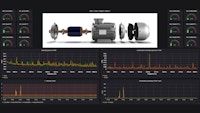Table of contents
Browse categories
Browse authors
 AB
ABAlberto Boffi
 AL
ALAlessia Longo
 AH
AHAl Hoge
 AB
ABAljaž Blažun
 BJ
BJBernard Jerman
 BČ
BČBojan Čontala
 CF
CFCarsten Frederiksen
 CS
CSCarsten Stjernfelt
 DC
DCDaniel Colmenares
 DF
DFDino Florjančič
 EB
EBEmanuele Burgognoni
 EK
EKEva Kalšek
 FB
FBFranck Beranger
 GR
GRGabriele Ribichini
Glacier Chen
 GS
GSGrant Maloy Smith
 HB
HBHelmut Behmüller
 IB
IBIza Burnik
 JO
JOJaka Ogorevc
 JR
JRJake Rosenthal
 JS
JSJernej Sirk
 JM
JMJohn Miller
 KM
KMKarla Yera Morales
 KD
KDKayla Day
 KS
KSKonrad Schweiger
Leslie Wang
 LS
LSLoïc Siret
 LJ
LJLuka Jerman
 MB
MBMarco Behmer
 MR
MRMarco Ribichini
 ML
MLMatic Lebar
 MS
MSMatjaž Strniša
 ME
MEMatthew Engquist
 ME
MEMichael Elmerick
 NP
NPNicolas Phan
 OM
OMOwen Maginity
 PF
PFPatrick Fu
 PR
PRPrimož Rome
 RM
RMRok Mesar
 RS
RSRupert Schwarz
 SA
SASamuele Ardizio
 SK
SKSimon Kodrič
 SG
SGSøren Linnet Gjelstrup
 TH
THThorsten Hartleb
 TV
TVTirin Varghese
 UK
UKUrban Kuhar
Valentino Pagliara
 VS
VSVid Selič
 WK
WKWill Kooiker
How to Interpret the Data From Your Machine Condition Monitoring Solution?

June 14, 2024
Machines are vibrating while running and sometimes you can hear a sound. Sound/noise is in fact a function of vibration.
We use machine condition monitoring technologies to listen to the machines. There are several machine condition monitoring techniques available on the market.

However, vibration monitoring is still the most commonly used method for the assessment of the machine's health. By vibration monitoring, we get signals into condition monitoring software for further data analysis and interpretation.
Interpretation can be manual (with a qualified Predictive Maintenance Engineer) or automatic (using Predictive maintenance software). The data is most commonly presented in two ways:
Time-domain: is a representation of physical values by showing amplitude on the y-axis and time on the x-axis
The frequency domain or spectrum: is just another way of looking at the same data. Frequency analysis decomposes time data in the series of sinus waves. Fast Fourier Transform (FFT) is a mathematical method for transforming a function of time into a function of frequency. Physical values are represented by showing amplitude on the y-axis and frequency on the x-axis
The frequency spectrum is the most commonly used signal representation in vibration analysis.
Learn more:
While amplitude is important, change in the amplitude over time is more important to understand the severity of the problem. For this reason, the availability of historical data (trend monitoring) functionality in the vibration monitoring system is crucial.
On the other hand, frequency tells us what is the nature of the developing fault. A very simplified representation is to put frequencies into two main categories:
Low-frequency vibration (DC to 1kHz) related to the machine speed – is measured in velocity (mm/s). Into this category fall misalignment, mechanical looseness, and imbalance
High Frequency (1kHz to 10kHz) related to the natural frequency of the component – is measured in acceleration (g). Into this category are fall-bearing faults and gears faults
Let's have a look at the theoretical part of imbalance and misalignment and compare it with real-life examples. For that purpose we built the following demo equipment:
The motor used in the demo setup is a 750 W electric motor running at a constant speed of 3000 RPM (50 Hz). It is connected to an external gearbox coupled with a jaw coupling.
For machine condition monitoring purposes we have mounted two ASI-1xVIB-50g accelerometers on the motor drive end. Both are horizontally aligned, one in the axial direction and the other in the radial direction.
We connected the sensors to the IOLITEd-2xASI data acquisition device and acquired the data using the Dewesoft Machine Condition Monitoring software. To present the machine status we set acceleration and velocity thresholds and used three colors to represent three different statuses:
Green: Normal condition
Yellow: Warning
Red: Alarm - the machine needs maintenance immediately
The FFT graphs on the bottom left part of the screen (see second figure below) shows the measured vibration velocity in the frequency domain from both sensors.
The axial sensor is represented by the red plot
The radial sensor is represented by the yellow plot
What is imbalance and how does it look like in the frequency domain?
The imbalance is one of the main causes of machine vibration. It is described by the uneven distribution of mass around the axis of rotation, which leads to the generation of a centrifugal force creating high vibration and reducing the useful life of machinery.
There are several causes of an imbalance starting with corrosion or wear (causing gaining or loss of weight), clearance tolerances, loose parts of the rotor, unevenly distributed weight inside the rotor, the porosity of castings, misalignment of the drivetrain to the rotor axis, and many others. When the machine is imbalanced it should be detected by the machine condition monitoring system and represented with a higher amplitude of the first order and in some cases also as an increased amplitude of the second and third-order of the machine rotating speed.
In our example, we simulate the imbalance by adding a mass of 5 grams on the outer side of the coupling by changing the coupling screw with a longer and heavier one. This moved the center of mass away from the shaft centerline and will cause higher vibration at the frequency of the motor rotational speed (50Hz) - first order in the radial direction.
What is parallel misalignment (offset) and how does it look like in the frequency domain?
Several types of misalignment exist:
Angular misalignment
Bearing misalignment
Pulley misalignment
Parallel misalignment
We say that two shafts are parallelly misaligned when they are parallel to each other but at a certain distance apart.
Parallel misalignment is also a very common issue causing machines to vibrate. When the machine is parallelly misaligned it should be detected by the machine condition monitoring system and represented with higher amplitude of the first order, second, and sometimes also in the third order of the machine rotating speed.
To simulate parallel misalignment between the motor and the gearbox, on the test rig, we moved the motor in the direction perpendicular to the shaft.
The position of the motor was horizontally changed by 3 mm. As you can see the system detected an increased amplitude in the 1st order (frequency of the motor rotational speed (50Hz)) and 2nd order in the radial direction.
While understanding low-frequency vibration normally isn't that difficult there is way more expertise needed to understand high-frequency vibration levels.
Are you familiar with bearings and possible defects?
Bearing defects are one of the most common failures that occur in rotating machinery. In order to understand the failures we first need to know the bearing composition. A typical rolling bearing consists of the following components:
Rolling elements - balls / rollers
Cage
Inner race
Outer race
Typical bearing defects
The most typical defects of the bearings are:
Outer race defects
Inner race defects
Rolling element defects
Cage defects
Multiple component defects
Bearing lubrication problems
Misalignment
Looseness
Let's take a closer look at typical bearing failures and how we can identify them in the frequency spectrum.
Outer race defects
Outer race defects are normally characterized in the frequency spectrum by the presence of multiple peaks (harmonics) of the BPFO - Ball Pass Frequency on the Outer race. BPFO is represented by the number of passes the balls make over a defective point on the outer race in the period the shaft makes one turn multiplied by the shaft rotating frequency.
The equation to calculate the BPFO is the following:
Where Nb is the number of rolling elements, Bd is the Ball diameter, Pd is the Pitch diameter and β is the contact angle. Typical BPFO frequency is from 2-15 x RPM.
Cage defects
Cage defects are normally characterized in the frequency spectrum by the presence of multiple peaks (harmonics) of the FTF, and cage failing frequency. FTF (Fundamental Train Frequency) – the rotational speed of the train corresponds to the number of rotations the train makes in the period the shaft makes one turn multiplied by the shaft rotating frequency.
The equation to calculate the FTF is the following:
Where Bd is Ball diameter, Pd is Pitch diameter and β is contact angle. Typical TFT frequency is less than 1/2 x RPM.
Ball defects
Ball defects are normally characterized in the frequency spectrum by the presence of multiple peaks (harmonics) of the BSF, rolling element failing frequency. BSF (Ball Spin Frequency) – the number of rotations a ball makes around itself in the period the shaft makes one turn multiplied by the shaft rotating frequency.
The equation to calculate the BSF is the following:
Where Bd is Ball diameter, Pd is Pitch diameter and β is contact angle. Typical BSF frequency is from 5-15 x RPM.
Inner race defects
Inner race defects are normally characterized in the frequency spectrum by the presence of multiple peaks (harmonics) of the BPFI, inner race failing frequency. BPFI (Ball Pass Frequency Inner) – the number of passes the balls make over a defective point on the inner race in the period the shaft makes one turn.
The equation to calculate the BSFI is the following:
Where Nb is the number of rolling elements, Bd is the Ball diameter, Pd is the Pitch diameter and β is the contact angle. Typical BPFO frequency is from 4-15 x RPM.
In practice, a special technique called Envelope Detection normally needs to be used to effectively determine the signature frequencies of the bearing elements.
Defects of multiple bearing components
Defects of multiple-bearing components are quite common. They are visible in the frequency spectrum by the presence of different bearing element failing frequencies and their harmonics.
Looseness
Looseness occurs when rotating elements have been mounted incorrectly or the bearing has been installed incorrectly. There are three types of bearing looseness known:
Excessive bearing internal clearance: Usually features a spectral signature characterized by the presence of synchronous vibration (rotating speed harmonics), subsynchronous vibration (0.5x RPM), and non-synchronous (1.5x RPM, 2.5xRPM, 3.5x RPM, etc.). These frequencies sometimes can be modulated by the FTF.
Looseness between bearing and shaft: Multiple rotation frequency harmonics appear but normally the principal one is the 3x RPM.
Looseness between bearing and casing: Multiple rotation frequency harmonics appear but normally the principal two are 1x RPM and 4x RPM.
Bearing misalignment
Bearing misalignment is characterized by the presence of vibration at various harmonics of the rotating frequency, with the most significant amplitude being at NB x RPM, where NB is the number of rolling elements in the bearing.
Inadequate lubrication
Inadequate lubrication problems are characterized by high-frequency vibration (between 1 kHz and 20 kHz), with bands of peaks spaced apart from each other, due to the excitation of the resonance frequencies of the bearings in these frequency ranges.
How do we know how severe the problem is?
Up to now, we have been talking more or less about identifying the location of the problem and thus have been focusing on the signature frequencies.
When we are trying to estimate the severity of the problem we need to look at the signal amplitude. While the absolute amplitude is important, a change in the amplitude over time is more important to understand the severity of the problem. For this reason, the availability of historical data functionality in the vibration monitoring system is crucial.
There are many norms, like the International Standards Organization (ISO), the German Association of Engineers (VDI), and many others, that regulate mechanical vibrations by proposing limits, measurement techniques, machine classifications, etc. Standards can serve as a good starting point to set the thresholds for alarms.
However, a good understanding of machine elements and long-term machine behavior, based on collected historical data and advanced data analysis, is vital for determining machine conditions. It enables maintenance engineers to set a maintenance strategy and perform it effectively and efficiently.
Conclusion
FFT spectrum analysis is a very important technique for the interpretation of the vibration signal and is often used to detect imbalance and misalignment.
In practice Machine Condition Monitoring experts use to protect critical machinery, permanent monitoring, and several forms of analysis and algorithms for better understanding and assessment of machine health like envelope detection, order tracking, orbit plots, and others.
Learn more:


